谷歌大佬总结的Python一些日常高频写法总结,建议收藏!
Posted 程序媛秃秃
tags:
篇首语:本文由小常识网(cha138.com)小编为大家整理,主要介绍了谷歌大佬总结的Python一些日常高频写法总结,建议收藏!相关的知识,希望对你有一定的参考价值。
数字
1、求绝对值
绝对值或复数的模
In \\[1\\]: abs(\\-6)
Out\\[1\\]: 6
2、进制转化
十进制转换为二进制:
In \\[2\\]: bin(10)
Out\\[2\\]: '0b1010'
十进制转换为八进制:
In \\[3\\]: oct(9)
Out\\[3\\]: '0o11'
十进制转换为十六进制:
In \\[4\\]: hex(15)
Out\\[4\\]: '0xf'
3、整数和ASCII互转
十进制整数对应的ASCII字符
In \\[1\\]: chr(65)
Out\\[1\\]: 'A'
查看某个ASCII字符对应的十进制数
In \\[1\\]: ord('A')
Out\\[1\\]: 65
4、元素都为真检查
所有元素都为真,返回 True,否则为False
In \\[5\\]: all(\\[1,0,3,6\\])
Out\\[5\\]: False
In \\[6\\]: all(\\[1,2,3\\])
Out\\[6\\]: True
5、元素至少一个为真检查
至少有一个元素为真返回True,否则False
In \\[7\\]: any(\\[0,0,0,\\[\\]\\])
Out\\[7\\]: False
In \\[8\\]: any(\\[0,0,1\\])
Out\\[8\\]: True
6、判断是真是假
测试一个对象是True, 还是False.
In \\[9\\]: bool(\\[0,0,0\\])
Out\\[9\\]: True
In \\[10\\]: bool(\\[\\])
Out\\[10\\]: False
In \\[11\\]: bool(\\[1,0,1\\])
Out\\[11\\]: True
7、创建复数
创建一个复数
In \\[1\\]: complex(1,2)
Out\\[1\\]: (1+2j)
8、取商和余数
分别取商和余数
In \\[1\\]: divmod(10,3)
Out\\[1\\]: (3, 1)
9、转为浮点类型
In \\[1\\]: float(3)
Out\\[1\\]: 3.0
如果不能转化为浮点数,则会报ValueError:
In \\[2\\]: float('a')
\\# ValueError: could not convert string to float: 'a'
10、转为整型
int(x, base =10) , x可能为字符串或数值,将x 转换为一个普通整数。如果参数是字符串,那么它可能包含符号和小数点。如果超出了普通整数的表示范围,一个长整数被返回。
In \\[1\\]: int('12',16)
Out\\[1\\]: 18
11、次幂
base为底的exp次幂,如果mod给出,取余
In \\[1\\]: pow(3, 2, 4)
Out\\[1\\]: 1
12、四舍五入
四舍五入,ndigits代表小数点后保留几位:
In \\[11\\]: round(10.0222222, 3)
Out\\[11\\]: 10.022
In \\[12\\]: round(10.05,1)
Out\\[12\\]: 10.1
13、链式比较
i \\= 3
print(1 < i < 3) \\# False
print(1 < i <= 3) \\# True
字符串
14、字符串转字节
字符串转换为字节类型
In \\[12\\]: s \\= "apple"
In \\[13\\]: bytes(s,encoding\\='utf-8')
Out\\[13\\]: b'apple'
15、任意对象转为字符串
In \\[14\\]: i \\= 100
In \\[15\\]: str(i)
Out\\[15\\]: '100'
In \\[16\\]: str(\\[\\])
Out\\[16\\]: '\\[\\]'
In \\[17\\]: str(tuple())
Out\\[17\\]: '()'
16、执行字符串表示的代码
将字符串编译成python能识别或可执行的代码,也可以将文字读成字符串再编译。
In \\[1\\]: s \\= "print('helloworld')"
In \\[2\\]: r \\= compile(s,"<string>", "exec")
In \\[3\\]: r
Out\\[3\\]: <code object <module\\> at 0x0000000005DE75D0, file "<string>", line 1>
In \\[4\\]: exec(r)
helloworld
17、计算表达式
将字符串str 当成有效的表达式来求值并返回计算结果取出字符串中内容
In \\[1\\]: s \\= "1 + 3 +5"
...: eval(s)
...:
Out\\[1\\]: 9
18、字符串格式
格式化输出字符串,format(value, format_spec)实质上是调用了value的__format__(format_spec)方法。
`In [104]: print("i am 0,age1".format("tom",18)) i am tom,age18`
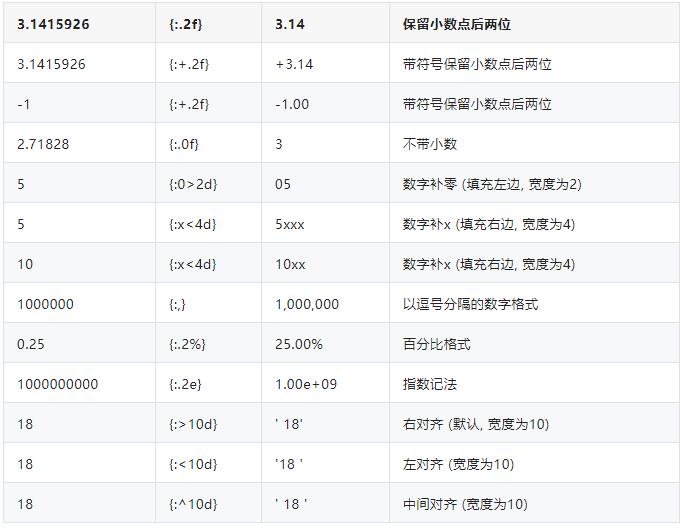
函数
19、拿来就用的排序函数
排序:
In \\[1\\]: a \\= \\[1,4,2,3,1\\]
In \\[2\\]: sorted(a,reverse\\=True)
Out\\[2\\]: \\[4, 3, 2, 1, 1\\]
In \\[3\\]: a \\= \\['name':'xiaoming','age':18,'gender':'male','name':'
...: xiaohong','age':20,'gender':'female'\\]
In \\[4\\]: sorted(a,key\\=lambda x: x\\['age'\\],reverse\\=False)
Out\\[4\\]:
\\['name': 'xiaoming', 'age': 18, 'gender': 'male',
'name': 'xiaohong', 'age': 20, 'gender': 'female'\\]
20、求和函数
求和:
In \\[181\\]: a \\= \\[1,4,2,3,1\\]
In \\[182\\]: sum(a)
Out\\[182\\]: 11
In \\[185\\]: sum(a,10) #求和的初始值为10
Out\\[185\\]: 21
21、nonlocal用于内嵌函数中
def excepter(f):
i \\= 0
t1 \\= time.time()
def wrapper():
try:
f()
except Exception as e:
nonlocal i
i += 1
print(f'e.args\\[0\\]: i')
t2 \\= time.time()
if i \\== n:
print(f'spending time:round(t2\\-t1,2)')
return wrapper
22、global 声明全局变量
先回答为什么要有global,一个变量被多个函数引用,想让全局变量被所有函数共享。有的伙伴可能会想这还不简单,这样写:
i \\= 5
def f():
print(i)
def g():
print(i)
pass
f()
g()
f和g两个函数都能共享变量i,程序没有报错,所以他们依然不明白为什么要用global.
但是,如果我想要有个函数对i递增,这样:
def h():
i += 1
h()
此时执行程序,bang, 出错了!抛出异常:UnboundLocalError,原来编译器在解释i+=1时会把i解析为函数h()内的局部变量,很显然在此函数内,编译器找不到对变量i的定义,所以会报错。
global就是为解决此问题而被提出,在函数h内,显式地告诉编译器i为全局变量,然后编译器会在函数外面寻找i的定义,执行完i+=1后,i还为全局变量,值加1:
i \\= 0
def h():
global i
i += 1
h()
print(i)
23、交换两元素
def swap(a, b):
return b, a
print(swap(1, 0)) \\# (0,1)
24、操作函数对象
In \\[31\\]: def f():
...: print('i\\\\'m f')
...:
In \\[32\\]: def g():
...: print('i\\\\'m g')
...:
In \\[33\\]: \\[f,g\\]\\[1\\]()
i'm g
创建函数对象的list,根据想要调用的index,方便统一调用。
25、生成逆序序列
list(range(10,\\-1,\\-1)) \\# \\[10, 9, 8, 7, 6, 5, 4, 3, 2, 1, 0\\]
第三个参数为负时,表示从第一个参数开始递减,终止到第二个参数(不包括此边界)
26、函数的五类参数使用例子
python五类参数:位置参数,关键字参数,默认参数,可变位置或关键字参数的使用。
def f(a,\\*b,c\\=10,\\*\\*d):
print(f'a:a,b:b,c:c,d:d')
默认参数_c不能位于可变关键字参数d后._
调用f:
In \\[10\\]: f(1,2,5,width\\=10,height\\=20)
a:1,b:(2, 5),c:10,d:'width': 10, 'height': 20
可变位置参数b实参后被解析为元组(2,5);而c取得默认值10; d被解析为字典.
再次调用f:
In \\[11\\]: f(a\\=1,c\\=12)
a:1,b:(),c:12,d:
a=1传入时a就是关键字参数,b,d都未传值,c被传入12,而非默认值。
注意观察参数a, 既可以f(1),也可以f(a=1) 其可读性比第一种更好,建议使用f(a=1)。如果要强制使用f(a=1),需要在前面添加一个星号:
def f(\\*,a,\\*\\*b):
print(f'a:a,b:b')
此时f(1)调用,将会报错:TypeError: f() takes 0 positional arguments but 1 was given
只能f(a=1)才能OK.
说明前面的*发挥作用,它变为只能传入关键字参数,那么如何查看这个参数的类型呢?借助python的inspect模块:
In \\[22\\]: for name,val in signature(f).parameters.items():
...: print(name,val.kind)
...:
a KEYWORD\\_ONLY
b VAR\\_KEYWORD
可看到参数a的类型为KEYWORD_ONLY,也就是仅仅为关键字参数。
但是,如果f定义为:
def f(a,\\*b):
print(f'a:a,b:b')
查看参数类型:
In \\[24\\]: for name,val in signature(f).parameters.items():
...: print(name,val.kind)
...:
a POSITIONAL\\_OR\\_KEYWORD
b VAR\\_POSITIONAL
可以看到参数a既可以是位置参数也可是关键字参数。
27、使用slice对象
生成关于蛋糕的序列cake1:
In \\[1\\]: cake1 \\= list(range(5,0,\\-1))
In \\[2\\]: b \\= cake1\\[1:10:2\\]
In \\[3\\]: b
Out\\[3\\]: \\[4, 2\\]
In \\[4\\]: cake1
Out\\[4\\]: \\[5, 4, 3, 2, 1\\]
再生成一个序列:
In \\[5\\]: from random import randint
...: cake2 \\= \\[randint(1,100) for \\_ in range(100)\\]
...: \\# 同样以间隔为2切前10个元素,得到切片d
...: d \\= cake2\\[1:10:2\\]
In \\[6\\]: d
Out\\[6\\]: \\[75, 33, 63, 93, 15\\]
你看,我们使用同一种切法,分别切开两个蛋糕cake1,cake2. 后来发现这种切法极为经典,又拿它去切更多的容器对象。
那么,为什么不把这种切法封装为一个对象呢?于是就有了slice对象。
定义slice对象极为简单,如把上面的切法定义成slice对象:
perfect\\_cake\\_slice\\_way \\= slice(1,10,2)
#去切cake1
cake1\\_slice \\= cake1\\[perfect\\_cake\\_slice\\_way\\]
cake2\\_slice \\= cake2\\[perfect\\_cake\\_slice\\_way\\]
In \\[11\\]: cake1\\_slice
Out\\[11\\]: \\[4, 2\\]
In \\[12\\]: cake2\\_slice
Out\\[12\\]: \\[75, 33, 63, 93, 15\\]
与上面的结果一致。
对于逆向序列切片,slice对象一样可行:
a \\= \\[1,3,5,7,9,0,3,5,7\\]
a\\_ \\= a\\[5:1:\\-1\\]
named\\_slice \\= slice(5,1,\\-1)
a\\_slice \\= a\\[named\\_slice\\]
In \\[14\\]: a\\_
Out\\[14\\]: \\[0, 9, 7, 5\\]
In \\[15\\]: a\\_slice
Out\\[15\\]: \\[0, 9, 7, 5\\]
频繁使用同一切片的操作可使用slice对象抽出来,复用的同时还能提高代码可读性。
28、lambda 函数的动画演示
有些读者反映,lambda函数不太会用,问我能不能解释一下。
比如,下面求这个 lambda函数:
def max\\_len(\\*lists):
return max(\\*lists, key\\=lambda v: len(v))
有两点疑惑:
(1)参数v的取值?
(2)lambda函数有返回值吗?如果有,返回值是多少?
调用上面函数,求出以下三个最长的列表:
r \\= max\\_len(\\[1, 2, 3\\], \\[4, 5, 6, 7\\], \\[8\\])
print(f'更长的列表是r')
程序完整运行过程,动画演示如下:
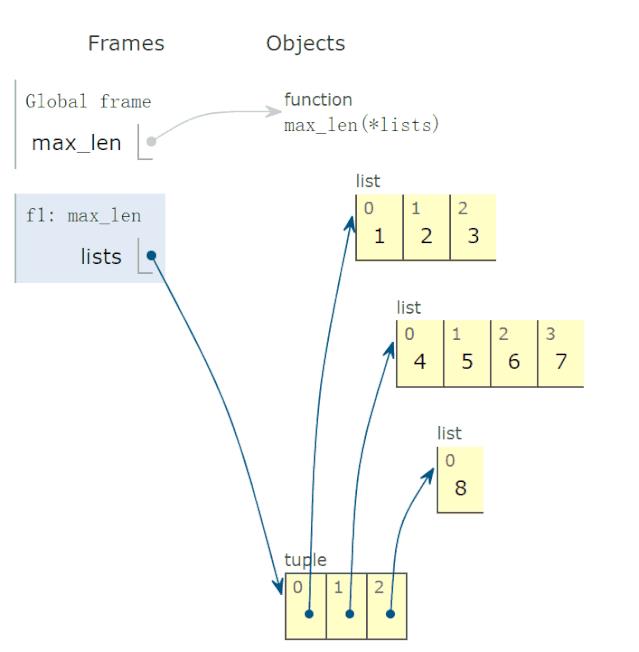
结论:
参数v的可能取值为*lists,也就是 tuple 的一个元素。
lambda函数返回值,等于lambda v冒号后表达式的返回值。
数据结构
29、转为字典
创建数据字典
In \\[1\\]: dict()
Out\\[1\\]:
In \\[2\\]: dict(a\\='a',b\\='b')
Out\\[2\\]: 'a': 'a', 'b': 'b'
In \\[3\\]: dict(zip(\\['a','b'\\],\\[1,2\\]))
Out\\[3\\]: 'a': 1, 'b': 2
In \\[4\\]: dict(\\[('a',1),('b',2)\\])
Out\\[4\\]: 'a': 1, 'b': 2
30、冻结集合
创建一个不可修改的集合。
In \\[1\\]: frozenset(\\[1,1,3,2,3\\])
Out\\[1\\]: frozenset(1, 2, 3)
因为不可修改,所以没有像set那样的add和pop方法
31、转为集合类型
返回一个set对象,集合内不允许有重复元素:
In \\[159\\]: a \\= \\[1,4,2,3,1\\]
In \\[160\\]: set(a)
Out\\[160\\]: 1, 2, 3, 4
32、转为切片对象
class slice(start, stop[, step])
返回一个表示由 range(start, stop, step) 所指定索引集的 slice对象,它让代码可读性、可维护性变好。
In \\[1\\]: a \\= \\[1,4,2,3,1\\]
In \\[2\\]: my\\_slice\\_meaning \\= slice(0,5,2)
In \\[3\\]: a\\[my\\_slice\\_meaning\\]
Out\\[3\\]: \\[1, 2, 1\\]
33、转元组
tuple() 将对象转为一个不可变的序列类型
In \\[16\\]: i\\_am\\_list \\= \\[1,3,5\\]
In \\[17\\]: i\\_am\\_tuple \\= tuple(i\\_am\\_list)
In \\[18\\]: i\\_am\\_tuple
Out\\[18\\]: (1, 3, 5)
**类和对象**
**34、是否可被调用**
检查对象是否可被调用
In [1]: callable(str)
Out[1]: True
In [2]: callable(int)
Out[2]: True
In [18]: class Student():
…: def __init__(self,id,name):
…: self.id = id
…: self.name = name
…: def __repr__(self):
…: return 'id = ‘+self.id +’, name = '+self.name
…
In [19]: xiaoming = Student(‘001’,‘xiaoming’)
In [20]: callable(xiaoming)
Out[20]: False
如果能调用`xiaoming()`, 需要重写`Student`类的`__call__`方法:
In [1]: class Student():
…: def __init__(self,id,name):
…: self.id = id
…: self.name = name
…: def __repr__(self):
…: return 'id = ‘+self.id +’, name = ‘+self.name
…: def __call__(self):
…: print(‘I can be called’)
…: print(f’my name is self.name’)
…:
In [2]: t = Student(‘001’,‘xiaoming’)
In [3]: t()
I can be called
my name is xiaoming
#### **35、ascii 展示对象**
调用对象的 `__repr__` 方法,获得该方法的返回值,如下例子返回值为字符串
>>> class Student():
def __init__(self,id,name):
self.id = id
self.name = name
def __repr__(self):
return 'id = ‘+self.id +’, name = '+self.name
调用:
>>> xiaoming = Student(id=‘1’,name=‘xiaoming’)
>>> xiaoming
id = 1, name = xiaoming
>>> ascii(xiaoming)
‘id = 1, name = xiaoming’
#### **36、类方法**
`classmethod` 装饰器对应的函数不需要实例化,不需要 `self` 参数,但第一个参数需要是表示自身类的 cls 参数,可以来调用类的属性,类的方法,实例化对象等。
In [1]: class Student():
…: def __init__(self,id,name):
…: self.id = id
…: self.name = name
…: def __repr__(self):
…: return 'id = ‘+self.id +’, name = '+self.name
…: @classmethod
…: def f(cls):
…: print(cls)
#### **37、动态删除属性**
删除对象的属性
In [1]: delattr(xiaoming,‘id’)
In [2]: hasattr(xiaoming,‘id’)
Out[2]: False
#### **38、一键查看对象所有方法**
不带参数时返回`当前范围`内的变量、方法和定义的类型列表;带参数时返回`参数`的属性,方法列表。
In [96]: dir(xiaoming)
Out[96]:
[‘__class__’,
‘__delattr__’,
‘__dict__’,
‘__dir__’,
‘__doc__’,
‘__eq__’,
‘__format__’,
‘__ge__’,
‘__getattribute__’,
‘__gt__’,
‘__hash__’,
‘__init__’,
‘__init_subclass__’,
‘__le__’,
‘__lt__’,
‘__module__’,
‘__ne__’,
‘__new__’,
‘__reduce__’,
‘__reduce_ex__’,
‘__repr__’,
‘__setattr__’,
‘__sizeof__’,
‘__str__’,
‘__subclasshook__’,
‘__weakref__’,
‘name’]
#### **39、动态获取对象属性**
获取对象的属性
In [1]: class Student():
…: def __init__(self,id,name):
…: self.id = id
…: self.name = name
…: def __repr__(self):
…: return 'id = ‘+self.id +’, name = '+self.name
In [2]: xiaoming = Student(id=‘001’,name=‘xiaoming’)
In [3]: getattr(xiaoming,‘name’) # 获取xiaoming这个实例的name属性值
Out[3]: ‘xiaoming’
#### **40、对象是否有这个属性**
In [1]: class Student():
…: def __init__(self,id,name):
…: self.id = id
…: self.name = name
…: def __repr__(self):
…: return 'id = ‘+self.id +’, name = '+self.name
In [2]: xiaoming = Student(id=‘001’,name=‘xiaoming’)
In [3]: hasattr(xiaoming,‘name’)
Out[3]: True
In [4]: hasattr(xiaoming,‘address’)
Out[4]: False
#### **41、对象门牌号**
返回对象的内存地址
In [1]: id(xiaoming)
Out[1]: 98234208
#### **42、isinstance**
判断_object_是否为类_classinfo_的实例,是返回true
In [1]: class Student():
…: def __init__(self,id,name):
…: self.id = id
…: self.name = name
…: def __repr__(self):
…: return 'id = ‘+self.id +’, name = '+self.name
In [2]: xiaoming = Student(id=‘001’,name=‘xiaoming’)
In [3]: isinstance(xiaoming,Student)
Out[3]: True
#### **43、父子关系鉴定**
In [1]: class undergraduate(Student):
…: def studyClass(self):
…: pass
…: def attendActivity(self):
…: pass
In [2]: issubclass(undergraduate,Student)
Out[2]: True
In [3]: issubclass(object,Student)
Out[3]: False
In [4]: issubclass(Student,object)
Out[4]: True
如果class是classinfo元组中某个元素的子类,也会返回True
In [1]: issubclass(int,(int,float))
Out[1]: True
#### **44、所有对象之根**
object 是所有类的基类
In [1]: o = object()
In [2]: type(o)
Out[2]: object
#### **45、创建属性的两种方式**
返回 property 属性,典型的用法:
class C:
def __init__(self):
self._x = None
def getx(self):
return self.\\_x
def setx(self, value):
self.\\_x \\= value
def delx(self):
del self.\\_x
\\# 使用property类创建 property 属性
x \\= property(getx, setx, delx, "I'm the 'x' property.")
使用python装饰器,实现与上完全一样的效果代码:
class C:
def __init__(self):
self._x = None
@property
def x(self):
return self.\\_x
@x.setter
def x(self, value):
self.\\_x \\= value
@x.deleter
def x(self):
del self.\\_x
#### **46、查看对象类型**
_class_ `type`(_name_, _bases_, _dict_)
传入一个参数时,返回 _object_ 的类型:
In [1]: class Student():
…: def __init__(self,id,name):
…: self.id = id
…: self.name = name
…: def __repr__(self):
…: return 'id = ‘+self.id +’, name = '+self.name
…:
In [2]: xiaoming = Student(id=‘001’,name=‘xiaoming’)
In [3]: type(xiaoming)
Out[3]: __main__.Student
In [4]: type(tuple())
Out[4]: tuple
#### **47、元类**
`xiaoming`, `xiaohong`, `xiaozhang` 都是学生,这类群体叫做 `Student`.
Python 定义类的常见方法,使用关键字 `class`
In [36]: class Student(object):
…: pass
`xiaoming`, `xiaohong`, `xiaozhang` 是类的实例,则:
xiaoming = Student()
xiaohong = Student()
xiaozhang = Student()
创建后,xiaoming 的 `__class__` 属性,返回的便是 `Student`类
In [38]: xiaoming.__class__
Out[38]: __main__.Student
问题在于,`Student` 类有 `__class__`属性,如果有,返回的又是什么?
In [39]: xiaoming.__class__.__class__
Out[39]: type
哇,程序没报错,返回 `type`
那么,我们不妨猜测:`Student` 类,类型就是 `type`,换句话说,`Student`类就是一个**对象**,它的类型就是 `type`,所以,Python 中一切皆对象,**类也是对象**
Python 中,将描述 `Student` 类的类被称为:元类。
按照此逻辑延伸,描述元类的类被称为:_元元类_,开玩笑了~ 描述元类的类也被称为元类。
聪明的朋友会问了,既然 `Student` 类可创建实例,那么 `type` 类可创建实例吗?如果能,它创建的实例就叫:类 了。你们真聪明!
说对了,`type` 类一定能创建实例,比如 `Student` 类了。
In [40]: Student = type(‘Student’,(),)
In [41]: Student
Out[41]: __main__.Student
它与使用 `class` 关键字创建的 `Student` 类一模一样。
Python 的类,因为又是对象,所以和 `xiaoming`,`xiaohong` 对象操作相似。支持:
* 赋值
* 拷贝
* 添加属性
* 作为函数参数
In [43]: StudentMirror = Student # 类直接赋值 # 类直接赋值
In [44]: Student.class_property = ‘class_property’ # 添加类属性
In [46]: hasattr(Student, ‘class_property’)
Out[46]: True
元类,确实使用不是那么多,也许先了解这些,就能应付一些场合。就连 Python 界的领袖 `Tim Peters` 都说:
“元类就是深度的魔法,99%的用户应该根本不必为此操心。

**工具**
#### **48、枚举对象**
返回一个可以枚举的对象,该对象的next()方法将返回一个元组。
In [1]: s = [“a”,“b”,“c”]
…: for i ,v in enumerate(s,1):
…: print(i,v)
…:
1 a
2 b
3 c
#### **49、查看变量所占字节数**
In [1]: import sys
In [2]: a = ‘a’:1,‘b’:2.0
In [3]: sys.getsizeof(a) # 占用240个字节
Out[3]: 240
#### **50、过滤器**
在函数中设定过滤条件,迭代元素,保留返回值为`True`的元素:
In [1]: fil = filter(lambda x: x>10,[1,11,2,45,7,6,13])
In [2]: list(fil)
Out[2]: [11, 45, 13]
#### **51、返回对象的哈希值**
返回对象的哈希值,值得注意的是自定义的实例都是可哈希的,`list`, `dict`, `set`等可变对象都是不可哈希的(unhashable)
In [1]: hash(xiaoming)
Out[1]: 6139638
In [2]: hash([1,2,3])
# TypeError: unhashable type: ‘list’
#### **52、一键帮助**
返回对象的帮助文档
In [1]: help(xiaoming)
Help on Student in module __main__ object:
class Student(builtins.object)
| Methods defined here:
|
| __init__(self, id, name)
|
| __repr__(self)
|
| Data descriptors defined here:
|
| __dict__
| dictionary for instance variables (if defined)
|
| __weakref__
| list of weak references to the object (if defined)
### **53、获取用户输入**
获取用户输入内容
In [1]: input()
aa
Out[1]: ‘aa’
#### **54、创建迭代器类型**
使用`iter(obj, sentinel)`, 返回一个可迭代对象, sentinel可省略(一旦迭代到此元素,立即终止)
In [1]: lst = [1,3,5]
In [2]: for i in iter(lst):
…: print(i)
…:
1
3
5
In [1]: class TestIter(object):
…: def __init__(self):
…: self.l=[1,3,2,3,4,5]
…: self.i=iter(self.l)
…: def __call__(self): #定义了__call__方法的类的实例是可调用的
…: item = next(self.i)
…: print (“__call__ is called,fowhich would return”,item)
…: return item
…: def __iter__(self): #支持迭代协议(即定义有__iter__()函数)
…: print (“__iter__ is called!!”)
…: return iter(self.l)
In [2]: t = TestIter()
In [3]: t() # 因为实现了__call__,所以t实例能被调用
__call__ is called,which would return 1
Out[3]: 1
In [4]: for e in TestIter(): # 因为实现了__iter__方法,所以t能被迭代
…: print(e)
…:
__iter__ is called!!
1
3
2
3
4
5
#### **55、打开文件**
返回文件对象
In [1]: fo = open(‘D:/a.txt’,mode=‘r’, encoding=‘utf-8’)
In [2]: fo.read()
Out[2]: ‘\\ufefflife is not so long,\\nI use Python to play.’
mode取值表:

#### **56、创建range序列**
1. range(stop)
2. range(start, stop\\[,step\\])
生成一个不可变序列:
In [1]: range(11)
Out[1]: range(0, 11)
In [2]: range(0,11,1)
Out[2]: range(0, 11)
#### **57、反向迭代器**
In [1]: rev = reversed([1,4,2,3,1])
In [2]: for i in rev:
…: print(i)
…:
1
3
2
4
1
#### **58、聚合迭代器**
创建一个聚合了来自每个可迭代对象中的元素的迭代器:
In [1]: x = [3,2,1]
In [2]: y = [4,5,6]
In [3]: list(zip(y,x))
Out[3]: [(4, 3), (5, 2), (6, 1)]
In [4]: a = range(5)
In [5]: b = list(‘abcde’)
In [6]: b
Out[6]: [‘a’, ‘b’, ‘c’, ‘d’, ‘e’]
In [7]: [str(y) + str(x) for x,y in zip(a,b)]
Out[7]: [‘a0’, ‘b1’, ‘c2’, ‘d3’, ‘e4’]
#### **59、链式操作**
from operator import (add, sub)
def add_or_sub(a, b, oper):
return (add if oper == ‘+’ else sub)(a, b)
add_or_sub(1, 2, ‘-’) # -1
#### **60、对象序列化**
对象序列化,是指将内存中的对象转化为可存储或传输的过程。很多场景,直接一个类对象,传输不方便。
但是,当对象序列化后,就会更加方便,因为约定俗成的,接口间的调用或者发起的 web 请求,一般使用 json 串传输。
实际使用中,一般对类对象序列化。先创建一个 Student 类型,并创建两个实例。
class Student():
def __init__(self,**args):
self.ids = args[‘ids’]
self.name = args[‘name’]
self.address = args[‘address’]
xiaoming = Student(ids = 1,name = ‘xiaoming’,address = ‘北京’)
xiaohong = Student(ids = 2,name = ‘xiaohong’,address = ‘南京’)
导入 json 模块,调用 dump 方法,就会将列表对象 \\[xiaoming,xiaohong\\],序列化到文件 json.txt 中。
import json
with open(‘json.txt’, ‘w’) as f:
json.dump([xiaoming,xiaohong], f, default=lambda obj: obj.__dict__, ensure_ascii=False, indent=2, sort_keys=True)
生成的文件内容,如下:
[
“address”:“北京”,
“ids”:1,
“name”:“xiaoming”
,
“address”:“南京”,
“ids”:2,
“name”:“xiaohong”
]
**\\- END -**
## 关于Python技术储备
学好 Python 不论是就业还是做副业赚钱都不错,但要学会 Python 还是要有一个学习规划。最后大家分享一份全套的 Python 学习资料,给那些想学习 Python 的小伙伴们一点帮助!
## Python入门基础教程
#### 第1章 快速上手:基础知识
1.1 交互式解释器
1.2 算法是什么
1.3 数和表达式
1.4 变量
1.5 语句
1.6 获取用户输入
1.7 函数
1.8 模块
1.9 保存并执行程序
1.10 字符串
#### 第2章 列表和元组
2.1 序列概述
2.2 通用的序列操作
2.3 列表:Python的主力
2.4 元组:不可修改的序列
#### 第3章 使用字符串
3.1 字符串基本操作
3.2 设置字符串的格式:精简版
3.3 设置字符串的格式:完整版
3.4 字符串方法
3.5 小结
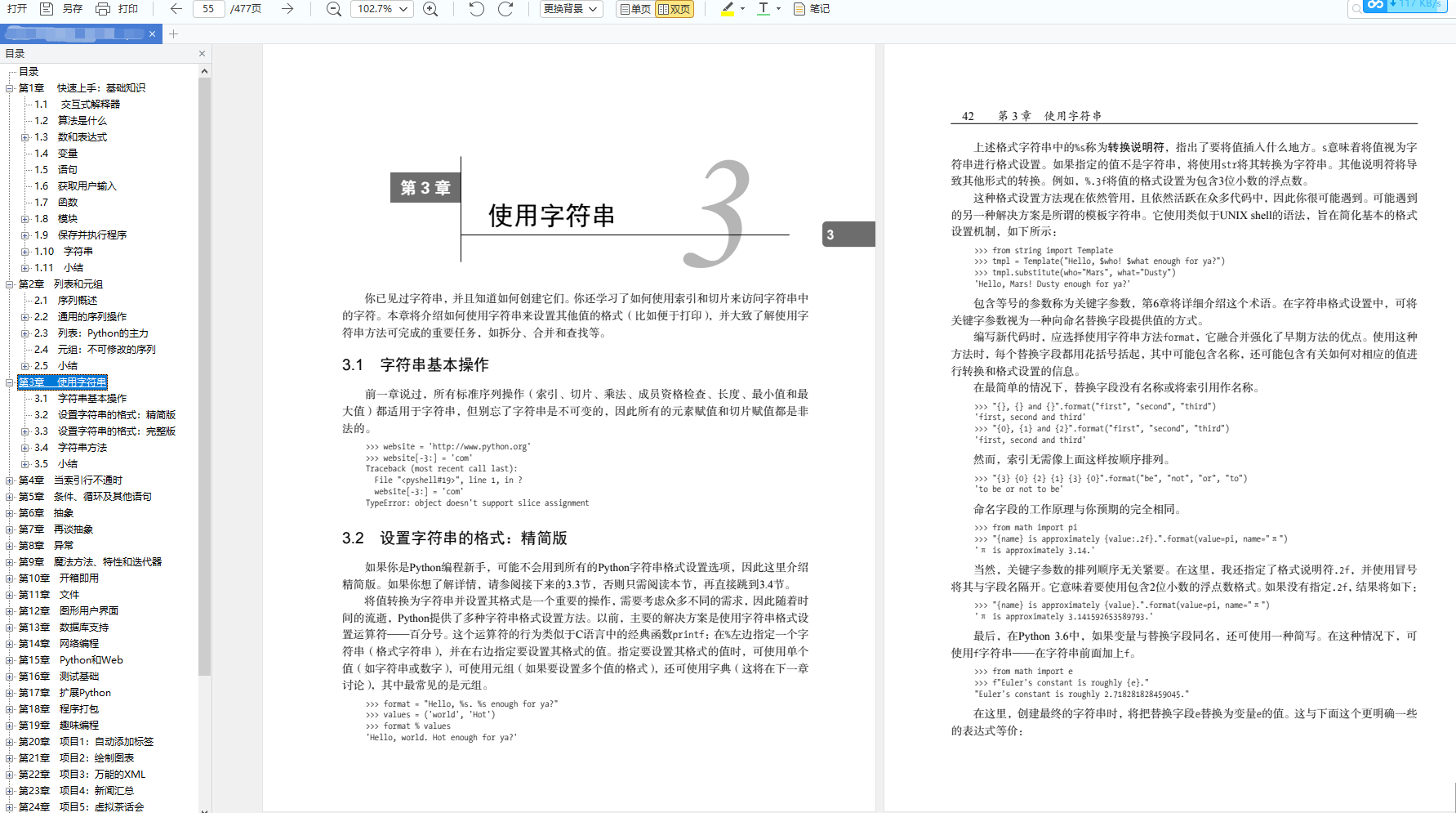
#### 第4章 当索引行不通时
4.1 字典的用途
4.2 创建和使用字典
#### 第5章 条件、循环及其他语句
5.1 再谈print和import
5.2 赋值魔法
5.3 代码块:缩进的乐趣
5.4 条件和条件语句
5.5 循环
......
#### 第6章 抽象
6.2 抽象和结构
6.3 自定义函数
6.4 参数魔法
6.5 作用域......
#### 第7章 再谈抽象
7.1 对象魔法
7.2 类
7.3 关于面向对象设计的一些思考
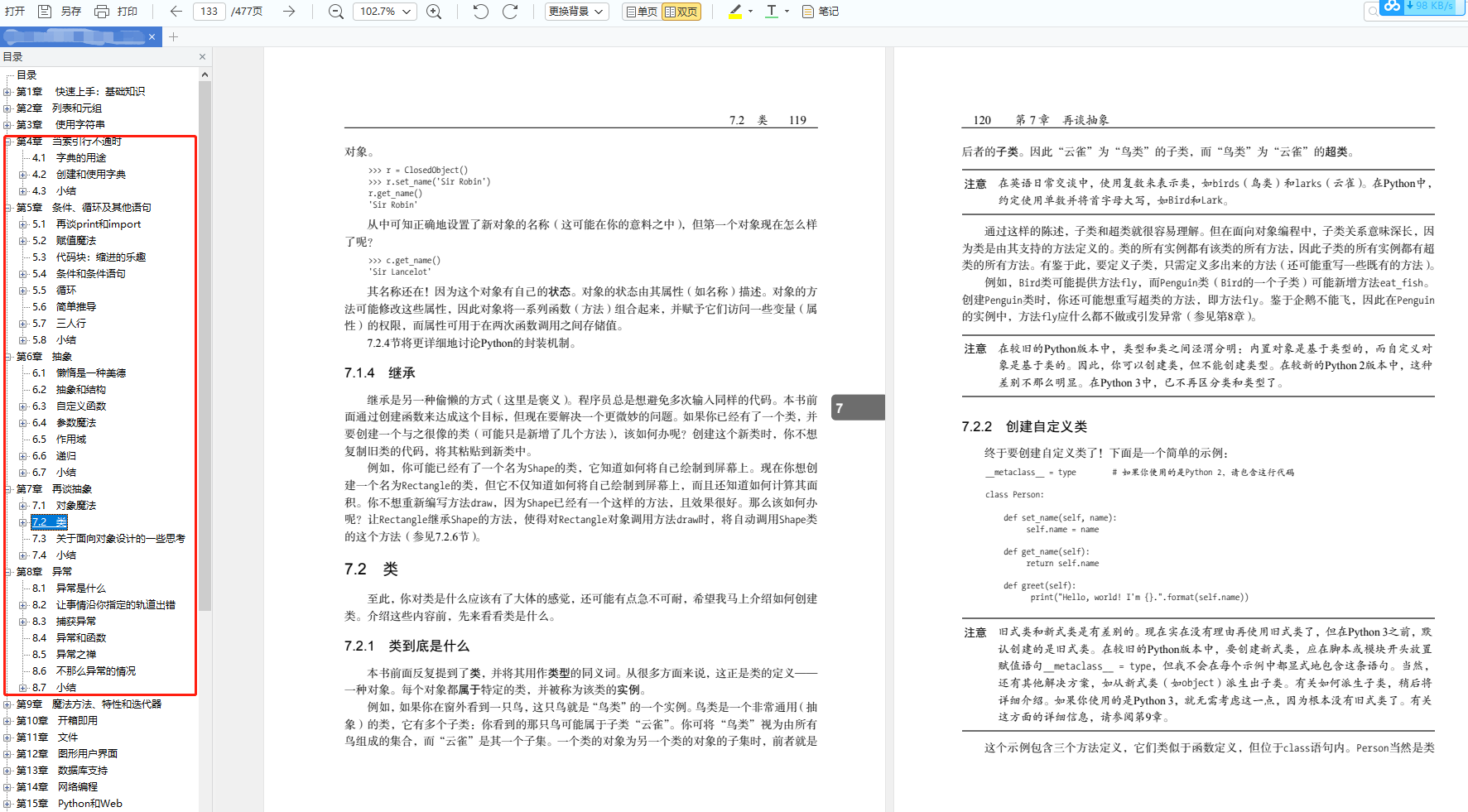
#### 第8章 异常
8.1 异常是什么
8.2 让事情沿你指定的轨道出错
8.3 捕获异常
8.4 异常和函数
......
#### 第9章 魔法方法、特性和迭代器
9.1 如果你使用的不是Python 3
9.2 构造函数
9.3 元素访问
......
#### 第10章 开箱即用
10.1 模块
10.2 探索模块
10.3 标准库:一些深受欢迎的模块
......
#### 第11章 文件
11.1 打开文件
11.2 文件的基本方法
11.3 迭代文件内容
#### 第12章 图形用户界面
12.1 创建GUI示例应用程序
12.2 使用其他GUI工具包
......
#### 第13章 数据库支持
13.1 Python数据库API
13.2 SQLite和PySQLite
......
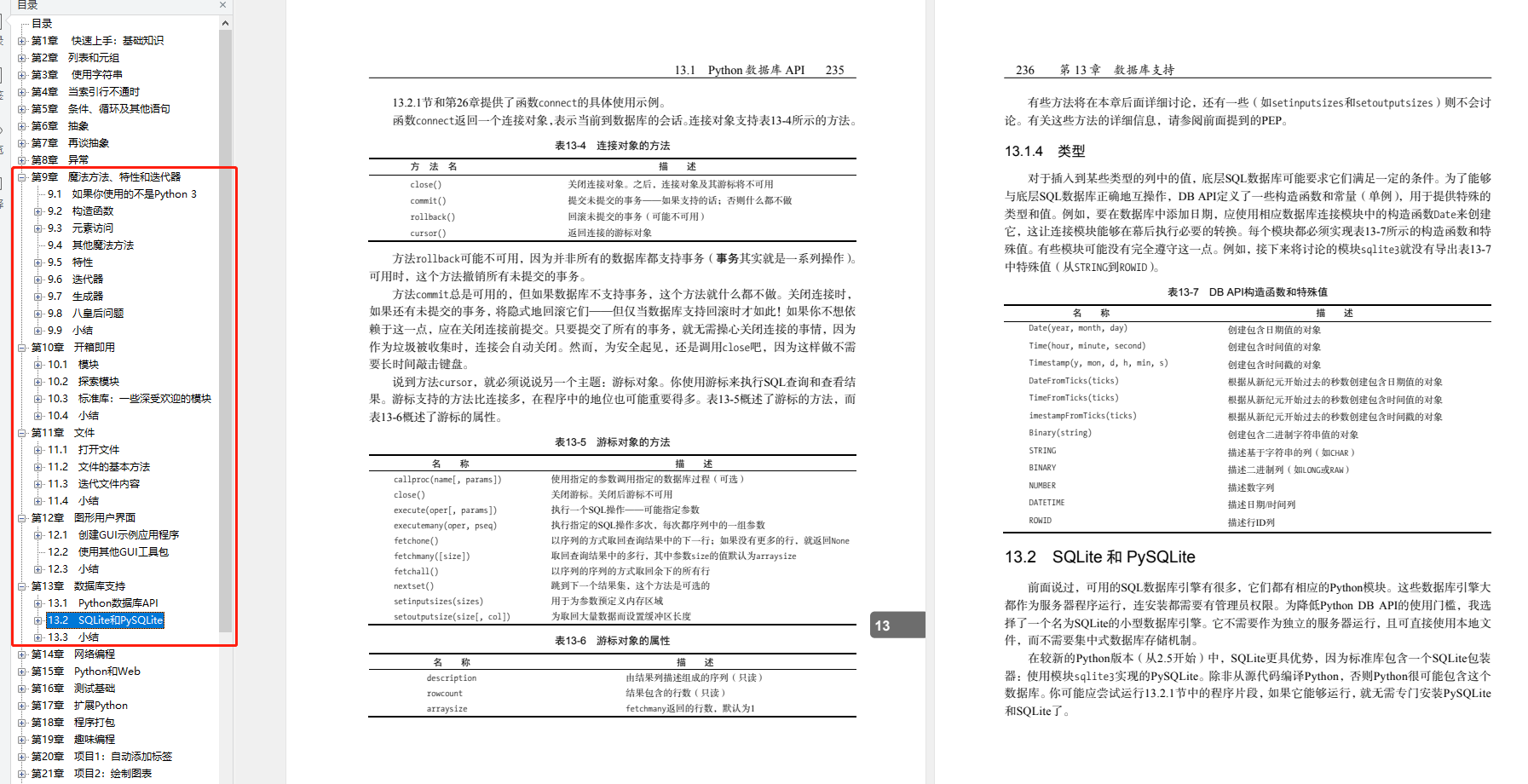
#### 第14章 网络编程
14.2 SocketServer及相关的类
14.3 多个连接
......
#### 第15章 Python和Web
15.1 屏幕抓取
15.2 使用CGI创建动态网页
15.3 使用Web框架
......
#### 第16章 测试基础
16.1 先测试再编码
16.2 测试工具
16.3 超越单元测试
......
#### 第17章 扩展Python
17.1 鱼和熊掌兼得
17.2 简单易行的方式:Jython和IronPython
......
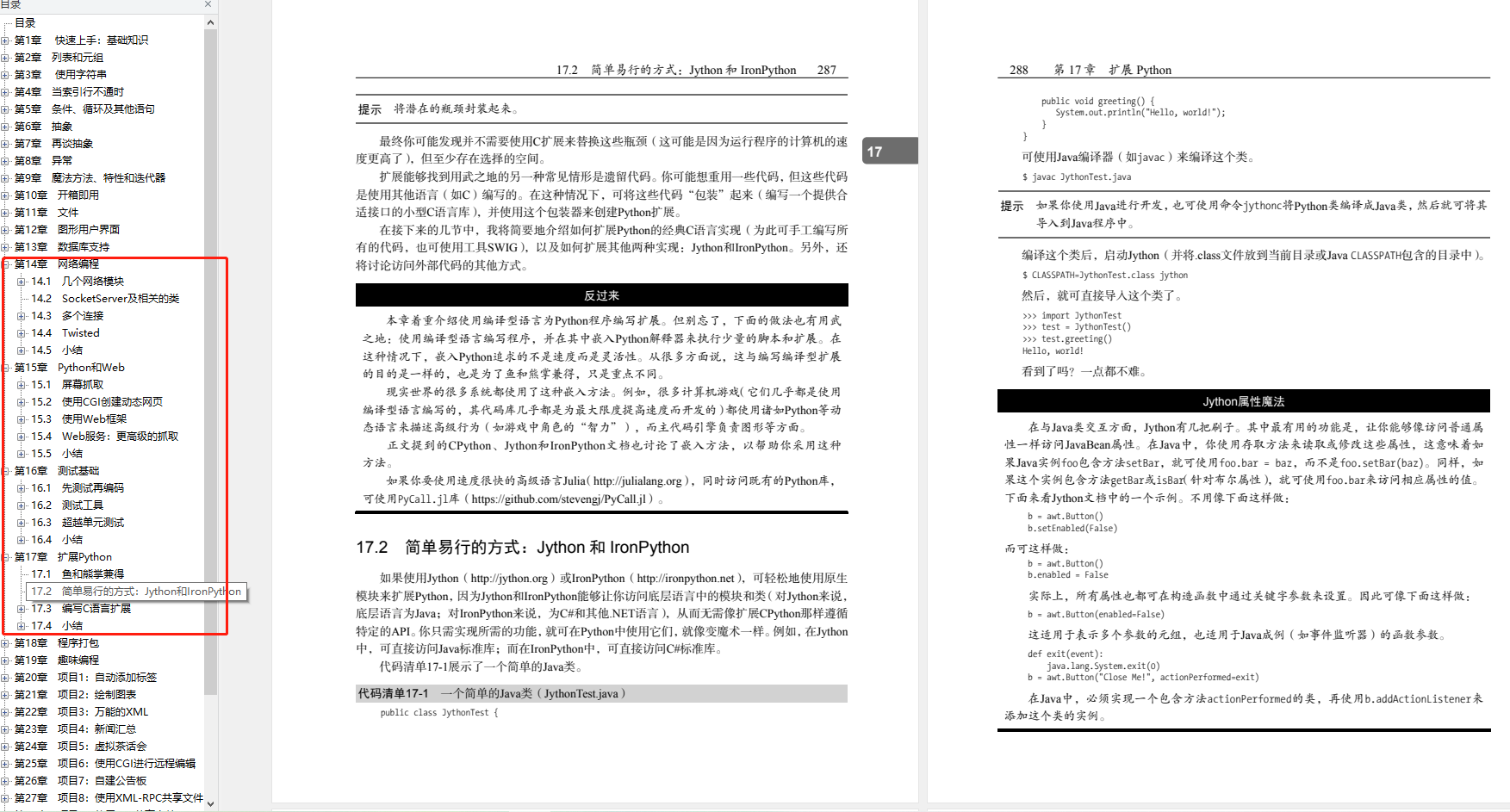
**第18章 程序打包
第19章 趣味编程
第20章 项目1:自动添加标签
第21章 项目2:绘制图表
第22章 项目3:万能的XML
第23章 项目4:新闻汇总
第24章 项目5:虚拟茶话会
第25章 项目6:使用CGI进行远程编辑
第26章 项目7:自建公告板
第27章 项目8:使用XML-RPC共享文件
第28章 项目9:使用GUI共享文件
第29章 项目10:自制街机游戏**
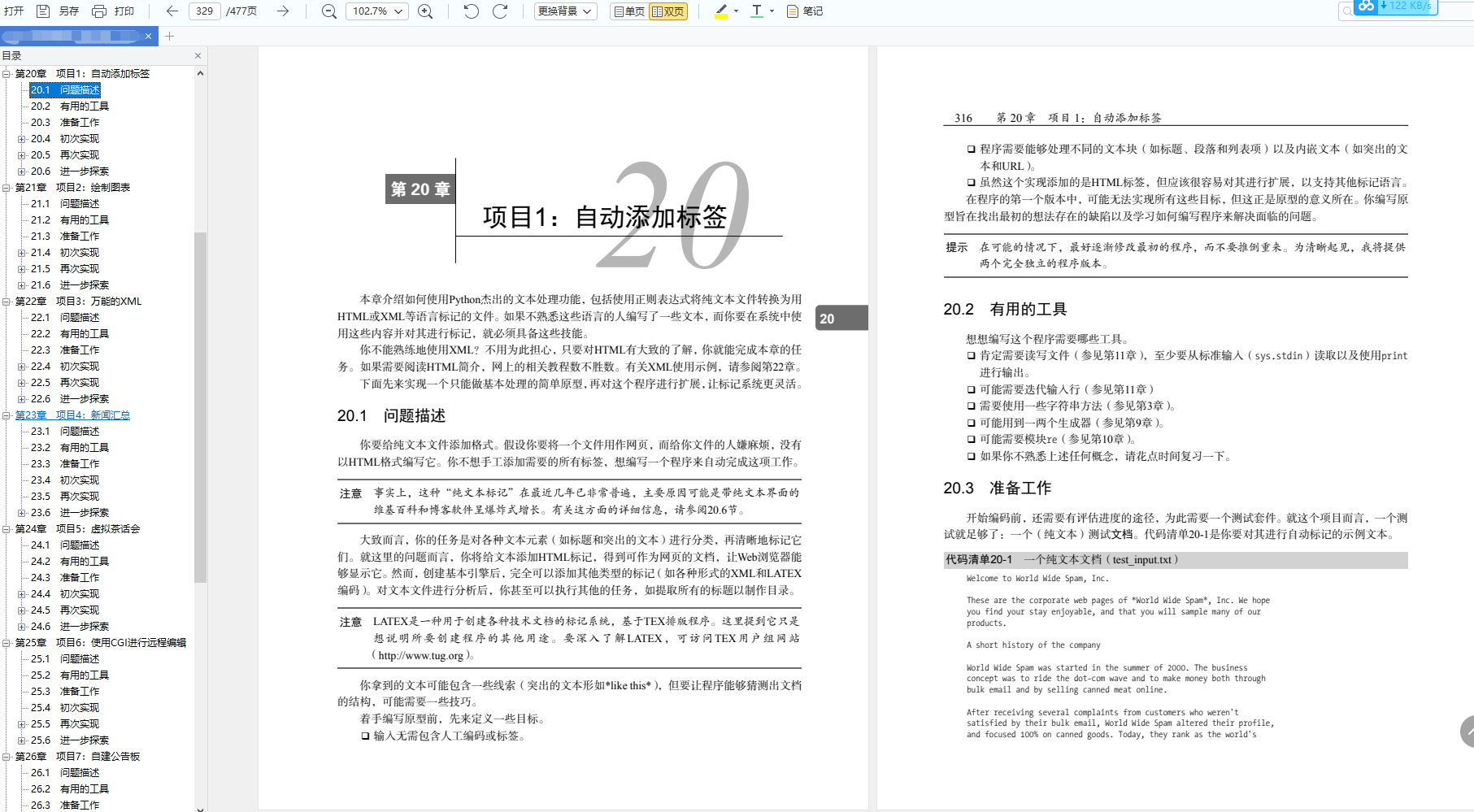
#### 朋友们如果需要这份完整版的Python学习资料,微信扫描下方CSDN官方认证二维码【`免费获取`】。

#### 总结
坚持到了这儿,恭喜你,表示你有做开发的潜力,其实我想说的上面的内容还是刚刚开始,刚开始大家不需要多么精通了解这些内容,除了Python方面的知识,每个部分掌握一点儿能进行基本开发就好,主要是不断练习,让自己跳出「舒适区」,进入「学习区」,但是又不进入「恐慌区」,不断给自己「喂招」。
以上是关于谷歌大佬总结的Python一些日常高频写法总结,建议收藏!的主要内容,如果未能解决你的问题,请参考以下文章